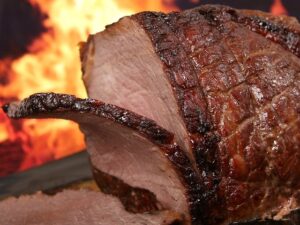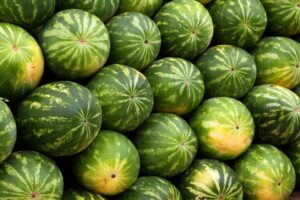Introduction
Proteins, carbohydrates, and fats are the three macronutrients that form the foundation of our diet. While all three are essential for our body’s functioning, they differ in their chemical composition and the roles they play in our bodies. In this article, we will explore the element that sets proteins apart from carbohydrates and fats.
Proteins: The Building Blocks of Life
Proteins are complex molecules made up of smaller units called amino acids. These amino acids are linked together in a specific sequence to form long chains, which then fold into unique three-dimensional structures. This intricate folding gives proteins their diverse functions in our bodies.
Amino Acids: Amino acids are the fundamental building blocks of proteins. There are 20 different amino acids that can be combined in various ways to create a wide array of proteins. Each amino acid consists of a central carbon atom bonded to an amino group, a carboxyl group, a hydrogen atom, and a unique side chain known as the R-group. It is the R-group that differentiates one amino acid from another.
Carbohydrates: The Energy Providers
Carbohydrates, commonly referred to as carbs, are molecules composed of carbon, hydrogen, and oxygen atoms. They are the primary source of energy for our bodies. Carbohydrates come in different forms, including simple sugars (monosaccharides), double sugars (disaccharides), and complex carbohydrates (polysaccharides).
Monosaccharides: Monosaccharides are the simplest form of carbohydrates and cannot be broken down further into smaller sugar molecules. Examples of monosaccharides include glucose, fructose, and galactose.
Disaccharides: Disaccharides are formed when two monosaccharides join together through a chemical bond. Common examples of disaccharides are sucrose (table sugar), lactose (milk sugar), and maltose (found in grains).
Polysaccharides: Polysaccharides are complex carbohydrates made up of long chains of monosaccharides. They serve as a storage form of energy in plants and animals. Examples of polysaccharides include starch, glycogen, and cellulose.
Fats: The Energy Reserves
Fats, also known as lipids, are another important source of energy for our bodies. Unlike proteins and carbohydrates, fats are composed mainly of carbon and hydrogen atoms, with a smaller proportion of oxygen atoms. Fats are highly concentrated forms of energy and play a crucial role in insulation, protection of organs, and the absorption of fat-soluble vitamins.
Fatty Acids: Fatty acids are the building blocks of fats. They are long chains of carbon atoms with a carboxyl group at one end. Fatty acids can be saturated (no double bonds between carbon atoms) or unsaturated (one or more double bonds between carbon atoms). Unsaturated fats are further classified as monounsaturated (one double bond) or polyunsaturated (multiple double bonds).
The Element That Sets Proteins Apart
The element that distinguishes proteins from carbohydrates and fats is nitrogen. Proteins are the only macronutrients that contain nitrogen atoms in addition to carbon, hydrogen, and oxygen. This nitrogen is crucial for the formation of amino acids and, consequently, proteins.
Nitrogen: Nitrogen is an essential element for life. It is a component of amino acids, which are the building blocks of proteins. Nitrogen atoms form bonds with carbon, hydrogen, and oxygen atoms in amino acids, creating the unique structure and function of proteins.
The presence of nitrogen in proteins allows them to perform various vital functions in our bodies, such as building and repairing tissues, supporting the immune system, transporting molecules, and acting as enzymes to facilitate biochemical reactions.
Conclusion
In summary, proteins are distinguished from carbohydrates and fats by the presence of nitrogen atoms in their chemical structure. While carbohydrates and fats primarily serve as energy sources, proteins have a more diverse range of functions due to their unique amino acid composition. Understanding the differences between these macronutrients helps us appreciate the importance of a balanced diet that includes adequate amounts of proteins, carbohydrates, and fats.
References
– National Center for Biotechnology Information. (n.d.). Protein. Retrieved from ncbi.nlm.nih.gov
– National Center for Biotechnology Information. (n.d.). Carbohydrates. Retrieved from ncbi.nlm.nih.gov
– National Center for Biotechnology Information. (n.d.). Fats. Retrieved from ncbi.nlm.nih.gov













